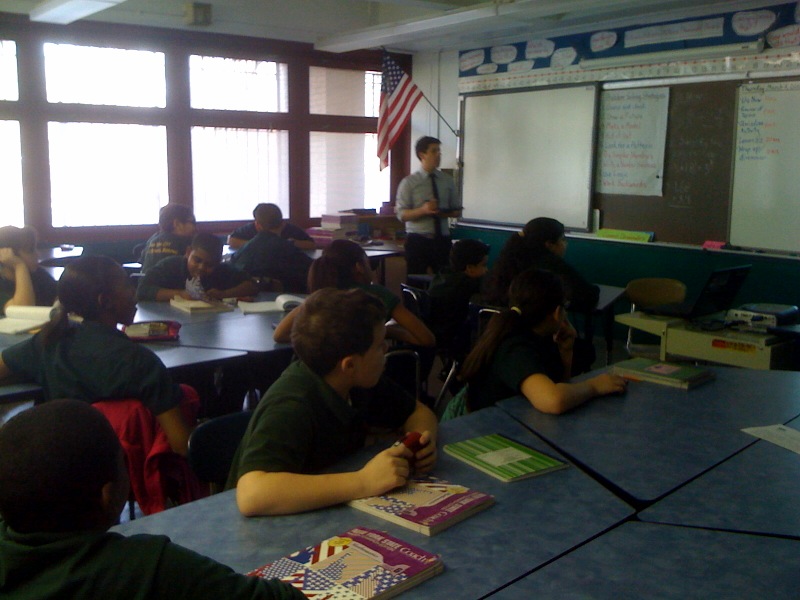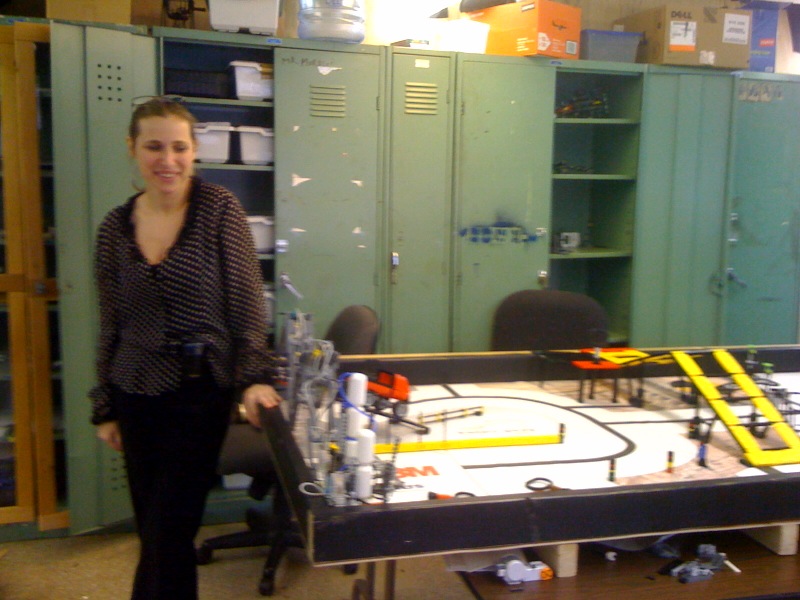Bronx Cheer by Christine Weiser, Managing Editor

I’ve been reporting on education for a long time. I’ve been to countless education conferences, reviewed thousands of press releases, and talked to hundreds of educators about how they are changing the lives of young people through the effective use of education technology.
But I don’t get to visit them that often.
That’s why it was a refreshing break from the office to visit the Archimedes Academy for Math, Science, and Technology in the Bronx at the invitation of the principal, Miriam Lazar.
The Web site describes the school as “a 6-12 public school whose mission is to provide a rigorous, innovative, college preparatory education focused on math, science, and technology applications while regularly celebrating the accomplishments of its diverse student body... Our dedicated staff works to improve the abilities and talents of all students through hands-on programs and project based learning.”
When I walked into the Academy building, it was not the urban oasis of cutting-edge tech I expected. The building smelled like most high schools: of paint and sneakers and sweat. Now in the classroom, I was impressed. There was a comfortable atmosphere in the room that buzzed with conversations from the students. Their seventh-grade math teacher was a young man who worked through a math problem on an interactive whiteboard. In front of each student was a math textbook, a notebook, a TI graphing calculator, and a Qwizdom student response system. I had seen these tools demoed plenty of times at conferences, but it just wasn’t the same as seeing them in action. Watch, for example, as these students work through the math problem using their tools:
You can see the kids thinking, using their tools not to solve the problem, but as a means to tap into those higher-order thinking skills so crucial to real learning.
We stopped next at a sixth-grade math class. The atmosphere was slightly more subdued, but the students were still engaged. Every student was participating. If they chatted, it was clear they were talking about the problem that needed solving. This teacher (also a young man) used a traditional whiteboard instead of an interactive whiteboard, combined with a projector and an interactive slate to demonstrate problems in front of the classroom. Again, the class worked through the problem and answered using their clickers. The displayed results were anonymous, but each clicker is linked to a specific student, so the teacher can gather data on the class or individual students who may need support.
Tools and ideas to transform education. Sign up below.

We next visited the robotics lab. The school implements project-based learning, partnering with Vision Ed, a company that specializes in bringing emerging technologies to teachers, students, and administrators in high-need areas. The kids demonstrated their complex robot design that they will be entering in April’s Robofest contest:
After the class tour, we returned to a small back room of the library, where I was impressed by the energy and enthusiasm of Principal Lazar(pictured below). She rattled off her many duties: teaching, IT, maintenance, fundraising, grant writing, and more.
“I never wanted to be a principal,” she said. “But when this opportunity came up, I couldn’t turn it down. How many people get a chance to design a school from the ground up?”

And her hard work—and that of many others in the school community--has paid off. Now in its third year, the Archimedes Academy has added grades 9-12 (their first group of students started in grade six). Their return enrollment is almost 100%, and the applications for admittance to the school now far exceeds the openings. They are adding more teachers, more rooms, and I suspect may soon outgrow their space.
There was also a confidence in the students that exuded self-esteem. I attribute that self esteem to not just the technology tools that are integral to the curriculum, but to the energy and enthusiasm of the teachers, and to the clear leadership of a principal who has not just vision, but a plan to realize that vision.
